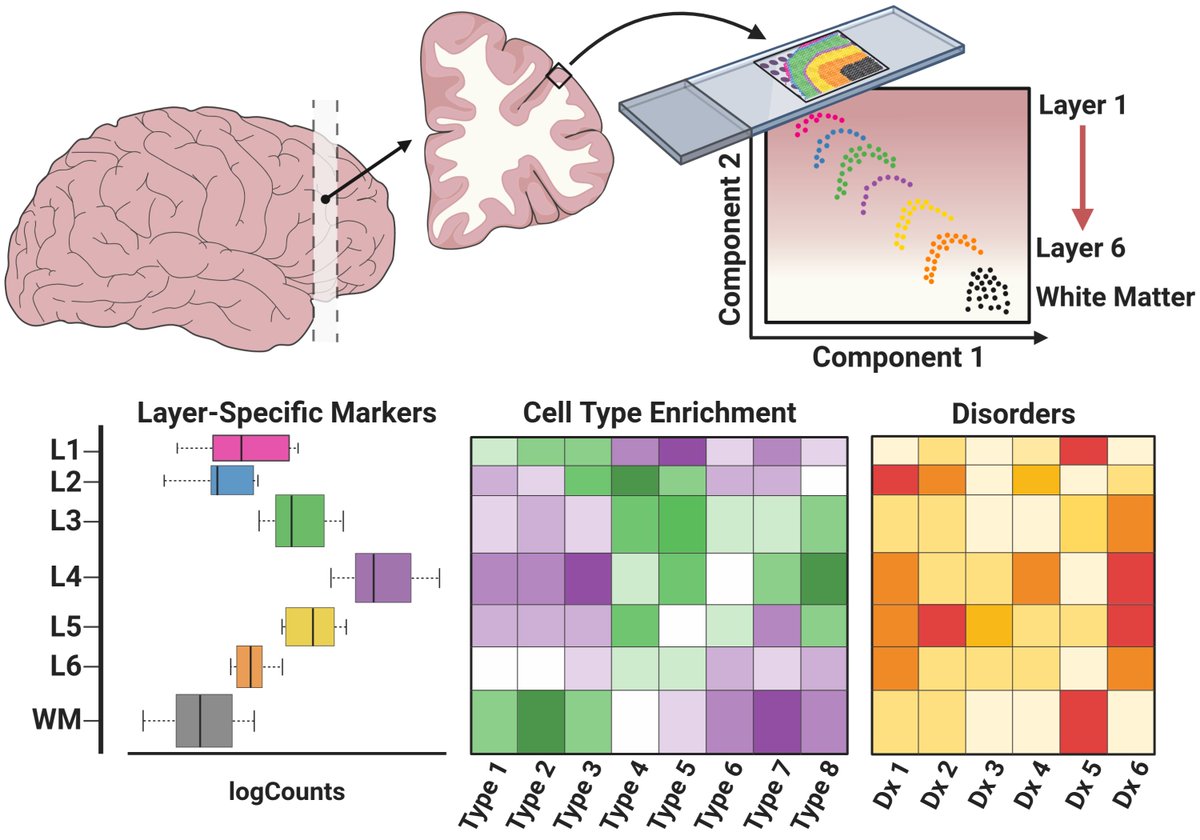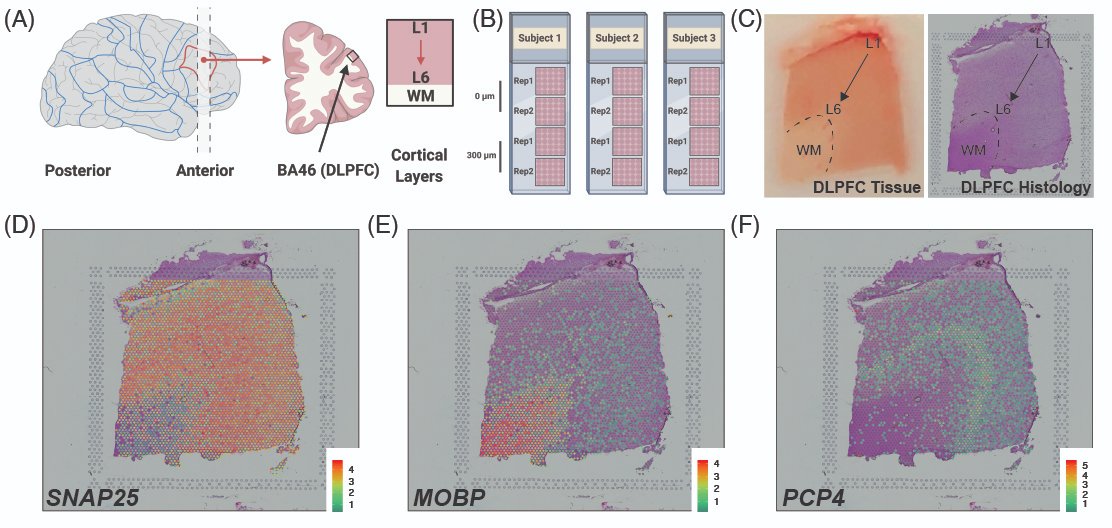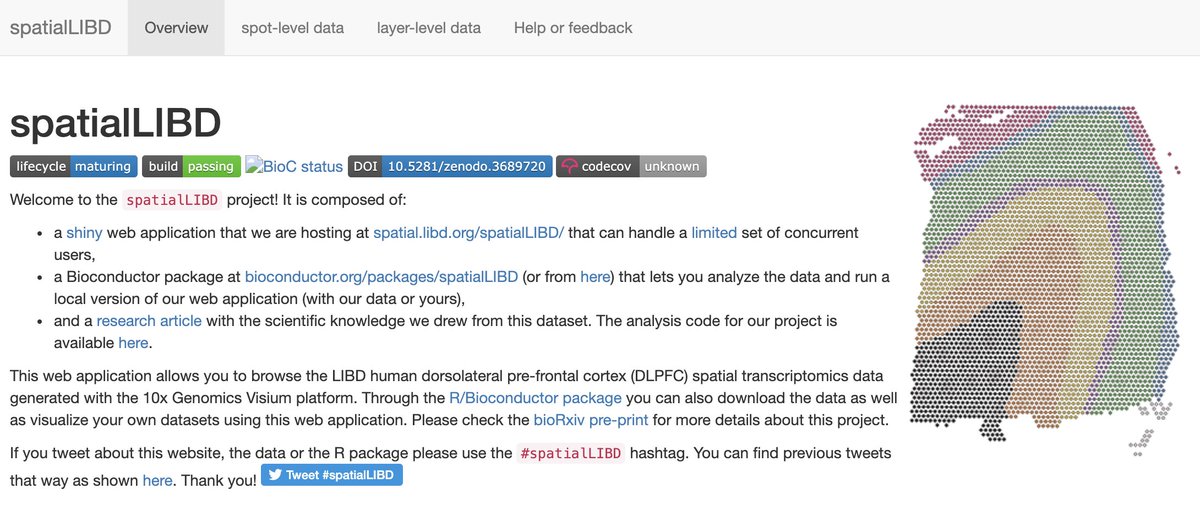Discover and read the best of Twitter Threads about #Bioconductor
Most recents (4)
Are you interested in getting started in #bioinformatics but not sure where to begin? Here are some tips to help you get started on your journey. A THREAD🧵🧵:
Start by learning a high-level #programming language, such as #Python or #R, and familiarizing yourself with data structures and #algorithms commonly used in #bioinformatics. The #BioPython and #Bioconductor libraries are great resources for this.
In my 1st tweetorial, I’m happy to share our preprint—my first, first author manuscript! We used @10xGenomics single-nucleus RNA-seq in a mouse model of electroconvulsive seizures (ECS) to assess activity-regulated gene expression in hippocampal #neurons. biorxiv.org/content/10.110…
Activity-regulated gene expression patterns in the #hippocampus regulate #plasticity, #learning, and #memory, and are linked to risk and treatment response for neuropsychiatric disorders. However, the cell type-specificity of these patterns is still not well characterized.
🔥off the press! 👀 our @biorxivpreprint on human 🧠brain @LieberInstitute spatial 🌌🔬transcriptomics data 🧬using Visium @10xGenomics🎉#spatialLIBD
🔍spatial.libd.org/spatialLIBD/
👩🏾💻github.com/LieberInstitut…
📚research.libd.org/spatialLIBD/
📦github.com/LieberInstitut…
biorxiv.org/content/10.110…
🔍spatial.libd.org/spatialLIBD/
👩🏾💻github.com/LieberInstitut…
📚research.libd.org/spatialLIBD/
📦github.com/LieberInstitut…
biorxiv.org/content/10.110…

Our study shows 12 samples from 3 human brain DLPFC neuronal layers + white matter with @10xGenomics's Visium platform. Features📜:
* Largest so far
* Harder to cluster than the example mouse data
* Data is all public
* @Bioconductor #rstats📦
* #shiny web app
2/7 #spatialLIBD
* Largest so far
* Harder to cluster than the example mouse data
* Data is all public
* @Bioconductor #rstats📦
* #shiny web app
2/7 #spatialLIBD

* Assessment of known markers
* Identification of layer-specific markers
* smFISH validation✅
* spatial registration of snRNA-seq data
* Layer-enrichment of neurodevelopmental and neuropsychiatric gene sets
* Data-driven layer-enriched clustering in the DLPFC
3/7 #spatialLIBD
* Identification of layer-specific markers
* smFISH validation✅
* spatial registration of snRNA-seq data
* Layer-enrichment of neurodevelopmental and neuropsychiatric gene sets
* Data-driven layer-enriched clustering in the DLPFC
3/7 #spatialLIBD

If you are interested in analyzing #SingleCell #RNAseq data in #Bioconductor using #rstats, please check out our paper Orchestrating single-cell analysis (OSCA) with @Bioconductor that was published in @naturemethods this week! #genomics #scRNAseq #dataviz #methodsmatter
@Bioconductor @naturemethods OSCA is a rich, reproducible, accessible (from beginners to experts!) resource with many #scRNAseq workflows & datasets. The resource is an online #bookdown book that compiles every night to track development by the open-source and open-development @Bioconductor #rstats community
@Bioconductor @naturemethods Now, OSCA is not the only set of packages / workflows for the analysis of #scRNAseq data. #Scanpy (scanpy.readthedocs.io/en/stable/) and #Seurat (satijalab.org/seurat/) and are two incredibly popular packages in #python and #rstats, respectively.

